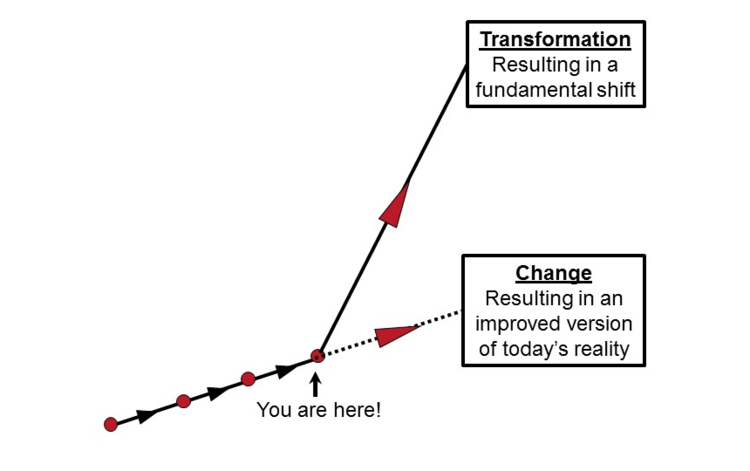BPM Institute defines BPM as “The definition, improvement, and management of end-to-end business processes in order to achieve clarity on strategic direction, alignment of resources, and increased discipline in daily operations.” A crucial ingredient in effective implementation of BPM is a common vision that guides the formation of the strategic direction and keeps the resources aligned beyond the initial planning phase and informs the operational decisions that are made every day.
Unfortunately, far too often organization miss the mark on ensuring that their BPM efforts are guided by a compelling vision and as a result, they end up practicing counterfeit BPM by installing tools and systems without creating the organizational alignment that is needed to maximize the benefits. Even the leaders and organizations who genuinely understand the power of a clear vision sometimes fail to deliver the kind of results they aspire to produce. There are a number of reasons for this and many of them can go undetected and sabotage your progress if you are not looking for them. Here are ten reasons to consider:
- We form the vision on the basis of what we don’t want versus what we do want. A vision that is rooted in changing or fixing something is not nearly as inspiring as one that is formed on the basis of the outcome we would want if we were to create it from scratch. Transformation is not a natural extension of past progression. Transformation requires a discontinuous shift in our mindset, strategies, and actions, which are not visible to us when we’re standing in the present and looking through the fog of today’s problems. The only way to create an inflection point and change the trajectory of progress from continuous improvement (change) to step change (transformation) is to step out into the desired future, fully embrace every aspect of it, and identify the steps that must be taken.

- We create our vision on top of limiting beliefs. It is important to identify and effectively address the individual and organizational beliefs that keep us from pursuing and achieving the vision. Otherwise, as we try to ignore them and sweep them under the rug, they will continue to sabotage you along the way. No matter how powerful or inspiring the vision is, it will be like icing on a mud pie if it is rooted in limiting beliefs about how attainable it is.
- We wish we had a different starting point. Even when we are clear on where we want to go, we sometimes get bogged down and can’t seem to move forward because we wish the conditions for pursuing the vision would be more favorable. The key is to confront reality and accept it as our starting point, exactly as it is, rather than wishing and hoping for a perfect start.
- We don’t embrace the feeling of having reached the vision. When the vision is all about numerical results and we don’t take the time to personalize it, we get fixated on doing things so that someday we have something, but we are not inspired by what the outcome and the journey make available to us in terms of our experience as we pursue our vision. The more team members we can enroll in having experienced what it will feel like to reach the vision, the more momentum we create in the organization to move forward.
- We keep it to ourselves. The power of a vision is multiplied exponentially when it is shared. The declaration of our vision to all stakeholders is the key to generating conversations that perpetuate enthusiasm and accountability. Unfortunately, the fear that we may declare something big and fall short often robs us of the joys and rewards of declaring and pursuing the extraordinary.
- We don’t revisit the vision often enough. Dwelling on the vision often and keeping it in front of ourselves helps us renew our minds and counteract our internal dialogue about the obstacles and our fears and worries. The default mode is to get in the stands and talk about the game rather than stay on the court and do what needs to be done. It is never the size of our challenges and always the size of our commitment that determines whether we remain in action or not, and revisiting the vision and keeping the image vivid in our mind gives us access to the commitment it takes to make it happen.
- We hold on to old thought patterns or behaviors that don’t fit our new vision and path. Often, our automatic responses and thought processes continue on until we make a conscious choice to alter them. When a new vision is formed, it behooves the leader and others to examine and adjust the old paradigms and approaches that are not conducive to making the vision a reality. It is always helpful to be intentional about identifying cultural artifacts and organizational norms that serve the status quo and make visible shifts that disrupt the old ways of thinking.
- We don’t create a compelling enough reason to overcome our tendency to maintain the status quo and act boldly. Every culture has self-preserving features built into it that will cause it to compensate for changes to maintain the status quo. If the vision does not offer the promise of an outcome that inspires us into action, we won’t have the inclination to make the emotional investment or take the social risks to bring it about.
- We try to chart the entire path instead of acting on what we know and letting the path unfold. One of the most common forces against rallying people around a vision is the discouragement caused by not knowing how to get there. When we try to satisfy everyone’s desire to be totally clear on the how to’s, we fail to act on what we already know. Get clear on why it is critical to achieve the vision. Identify the key milestone based on what you know today and go for it. If you keep repeating this process, the path will continue to unfold before you.
- We try to think our way into a new way of behaving rather than behaving our way into a new way of thinking. It is easy to talk ourselves out of taking action toward a stretching vision. Most of the time that is what our internal dialogue is all about. When you act in the direction of the desired outcome while the internal dialogue is going on, you will find yourself shifting the quality of the internal dialogue.
I encourage you to examine your visioning efforts against these characteristics and make course corrections as you see fit to maximize the inherent power of creating a compelling vision and having it guide your BPM efforts.

















